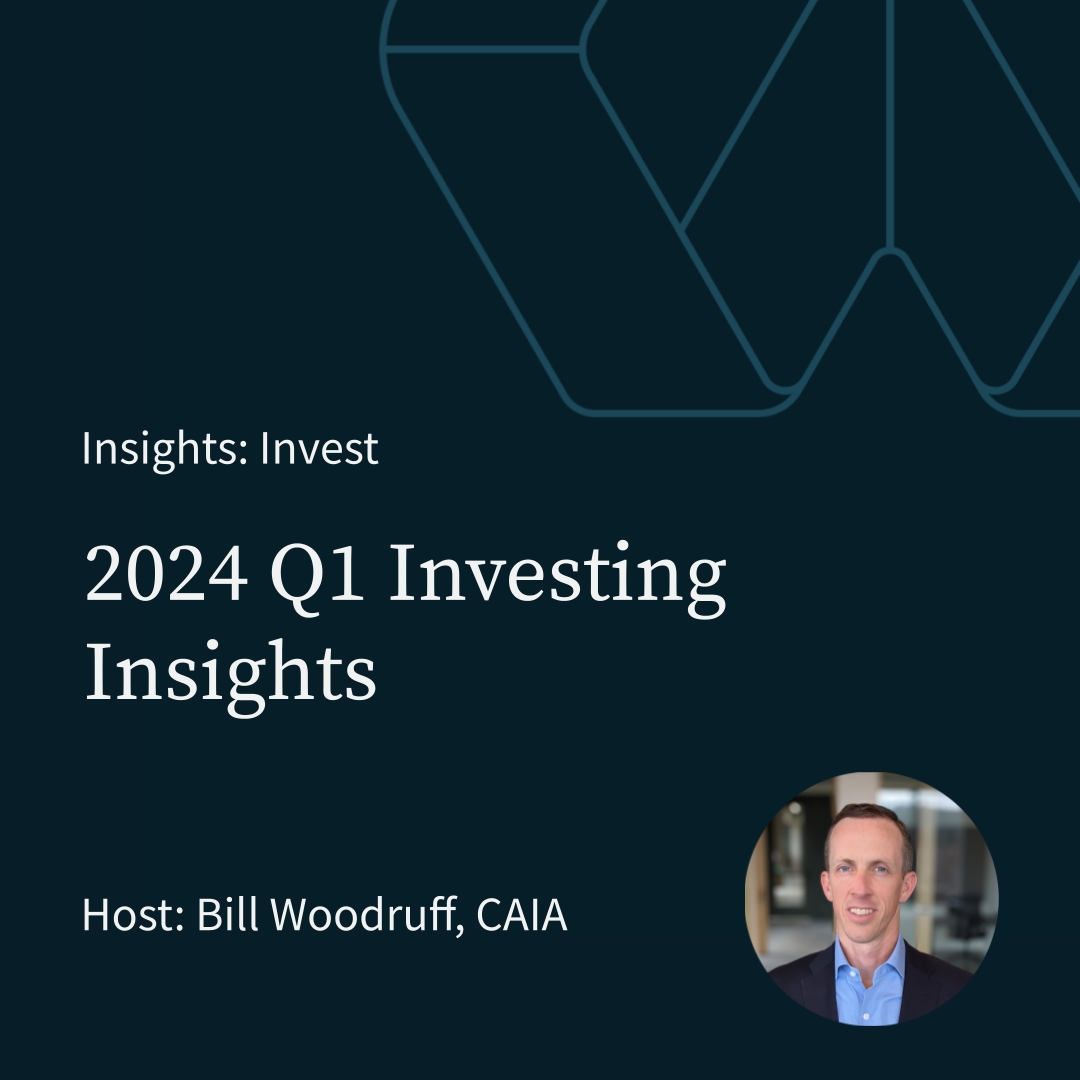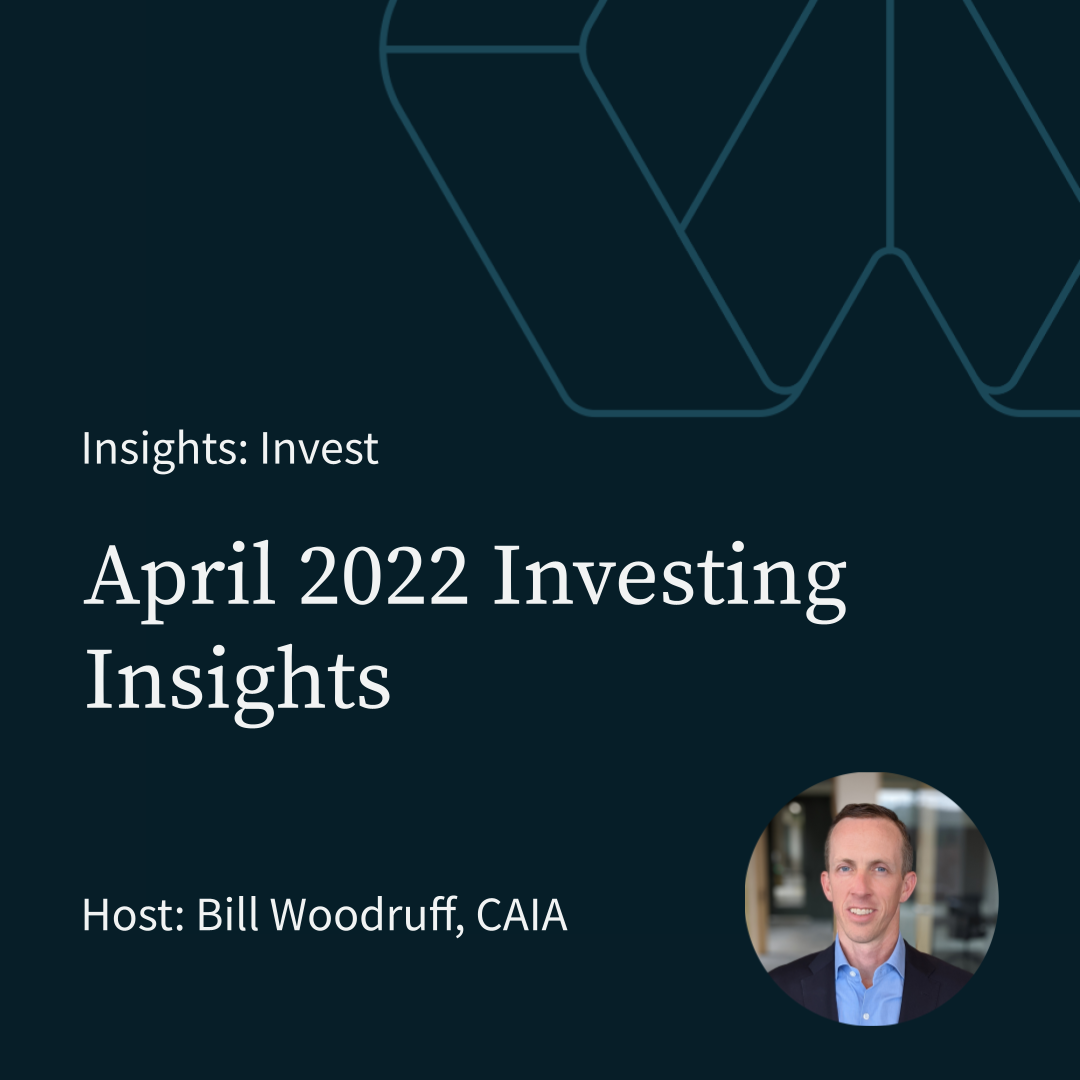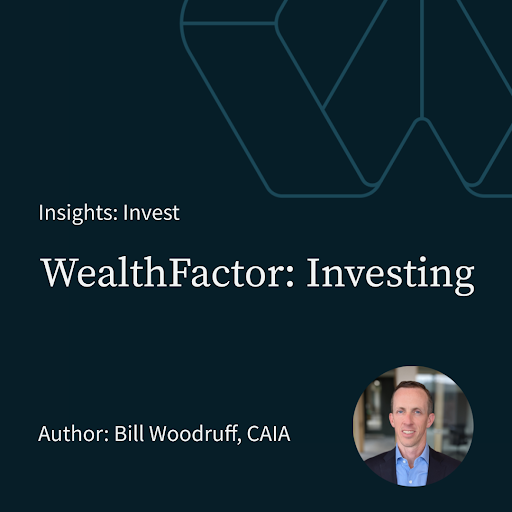July 2020 Review Replay
SUMMARY KEYWORDS
valuations, interest rates, equity, returns, investing, year, relative, average, inflation, investment, perspective, yield, based, point, equity markets, economies, investment advice, period, run, driven
Transcript:
Good afternoon and welcome. My name is Bill Woodruff. Today I'll be reviewing my thoughts on global financial markets with a specific look at July of 2020. share a few words for compliance purposes. This call is for informational purposes only and may be recorded. statements made during this call are the opinions of the speaker and are subject to risks and uncertainties some of which are significant in scope. And by their very nature beyond the control of wealth factor, there can be no assurance that such statements will prove to be accurate and actual results. And future events could differ in a material way from said statements. Historical results are not necessarily indicative of future performance. So for those of you who are less familiar with me Founded wealth factor in 2017. Largely disenchanted with the average investment advice, service offering and industry and based on the belief that I could build a better way, I have a diverse background
01:18
in investing, both in small businesses, a former firm that I founded, operated, including the launch and management of mutual fund, and I've also spent time as a managing director at the public company fortress Investment Group. Wealth factor is a Lake Oswego based investment advisor, we focus on providing efficient, customized solutions to our investors. Most of what we do is based on indices, we manage portfolios and provide investment advice through accounts held in our Clients names at independent third party custodians. And we charge a point three 5% fee on assets in which we're responsible for managing a quick
02:13
review of of how well factor views the world philosophically, we have a, what we call our risk smart approach to investing and our three core components for that. First is being portfolio smart, which is largely a reference to the structure in which we provide investment advice, and is really about what you avoid. We believe that most of the time if not all the time, we should avoid
02:39
picking and timing of investing at every level, the individual security sector, overall, global exposures etc. We also believe very strongly that layers of management and complexity almost always hurt the end consumer Are the average investor fees. So there's a there's a l'm a variety of efficient element components to being what we call fi smart starts with our fee, which is really less than a third of what I see in terms of industry average. And then routing. What we do largely in evidence based, or index based investing further drives efficiency in again, being fee smart. And lastly,
03:29
is tax efficiency or what we call being tax smart. And with a focus and a background in systems, we offer what's a service, which is called direct indexing. And what that is, is effectively taking an index and replicating it using individual securities, which gives us the opportunity to specifically in taxable portfolios really manage for tax, which is something I think we're going to see the industry really shift to over the next 10 years. So before I jump into July, just kind of a re summary. We've had a lot of volatility in 2,021st quarter, obviously the Coronavirus, it was a major note and not it's not something that any investor could have really anticipated. And then even the impact and the potential for, you know, complete shutdown of economic activity. That was obviously something that was exoticness and unpredictable. And then almost
04:27
equally, so was the, you know, the swift action by the Federal Reserve Bank and the federal government, as you reflect back on that swift action, you could link that to this what was probably a slow reaction in the global financial crisis of 2008. You know, the Fed and to a lesser extent, the federal government did act. It was it took a significant amount of time for them to organize and put into place their various different programs to support the economy through the financial crisis. And so you know, lots of I think, The real themes for this year was exotic,
05:03
event driven by a pandemic. And then, you know, very swift reaction by the Fed and really, as well as global central banks, not just the Fed, and then the US government and other governments. And so we've seen a V shaped, we saw it very, very quick descent in asset prices across the board, as we faced, you know, shutdown from an economic activity perspective, and what does that mean? And we've seen a V shaped recovery, largely, again, driven by very, very quick
05:33
action. So I'm going to spend my goal in the US is to be as brief as I can focus on quality over quantity, and then also tilt to what I think is the proper way to think about investing is not get too granular to detail about what happened yesterday in the market, or what even happened in July in the market.
05:55
And so the goal, even though the cadence of these calls is monthly, beyond orientation and perspective, I'll try to really focus on longer run thinking. So today we'll go through some thoughts on valuation. That's a big topic. It has been a big topic and the media is really picked up on that and some long run perspective relative to the overall markets. And then I think it's really easy to get really equity centric, from an investment perspective and investment bucket vise perspective. And so I'll spend a little bit of time talking about interest rates and inflation. So this graph is a graph going back to 95. All the way to current that well, apologies it actually only goes through June 30. We've
06:40
seen a little bit of a stretch up between June 30 and July from here, but this is plenty of data for us to talk about this concept. So this is the P e ratio, the price relative to the earnings on a forward or estimated basis for the s&p 500 are what really are the largest generally the largest 500 companies in the s&p totally can it's it's the middle dotted line is a 25 year average and then there's plus or minus one standard deviation. Two for perspective, we can see that based on forward Pease, we are above the one year standard deviation Mark line. A couple thoughts here. One valuations have had especially on a short run basis, very limited predictive value. So as you hear in the media, or think about man stocks are high or the valuations from a PE perspective aren't interesting or attractive, I would caution you from drawing the conclusion that I shouldn't own stocks because of valuation. The second thing that I think is a little bit more nuanced and a little bit harder to identify
07:51
here is if we go back we have a, you know, a period historically where we have We saw valuations significantly higher for a fairly long period of time. And that's really that build up of the tech bubble. So this really speaks to that same concept of valuations not being necessarily useful or predictive. In that, you know, if we kind of looked over to 1997, we have that 20 plus PE multiple, and it stayed that way, really, all the way through 2001 2002. You know, it's also worth noting that just like most things, in financial markets, economies, etc. If you're using a forward PE, it's by its very nature, an estimate, trying to predict anything in our world is probably a an exercise that really has, again, a limited amount of benefit.
08:48
So I referenced this and this is a more complicated graph, but it supports the simple concept that I just shared, that the idea that P E's are evaluated have unlimited, if not, in some cases, almost no predictive value in the short run. And so we have an R squared figure on the left. And there's a lot this is basically mapping a one year returns after a certain p measurement or data point. And so all those little gray dots are all of the data points, and then they're fitting through a regression analysis, you know, what is the R squared and in to define r squared, you're basically saying if you have 100% r squared, there's a lot of meaning there. And as that are squared gets close to zero, it was suggests there's not a lot of meaning. And so if we're looking at one year, Ford returns a 9% squared would suggest Okay, we have a high PE today
09:46
that's nearly meaningless in regards to what the future 12 months we're going to yield from a change in equity asset prices, at least based on historical experience. And then the second In side, the right side shows it over the following five years. And as you go out, over longer periods of time, data tightens. There's lots of volatility in the short run in equities historically. But over long periods of time you see a significant tightening. And so in this analysis, you do see, you know, some, you know, some relationship between valuations and returns to some degree. One last point
10:29
I'll make on valuations is, conceptually, most things in investing are relative to other choices. So if we're thinking about equities relative to bonds, or safe bonds, or relative to cash, if we think about the data that we're looking at here, and we go back, and we look at what was the average yield for, say, fixed income over this time period, this is the same time period that the last graph is is goes back all the way to 1995. And I don't know off The top of my head what the average 10 year Treasury yield was over that time period. But there's good stretches where you could get five or 6% from just owning a treasury and taking no, you know, theoretic credit risk. And so if we look at today and say, peas are, you know, relative to that timeframe last 25 years, historically above average, there may actually be a basis for that relative to our, our choices with the 10 year Treasury today being I think somewhere around 50 basis points. So they'll transition just
11:37
to kind of that same kind of close off my equity thoughts with that concept of visually about volatility in equity prices or returns in the short run versus a, you know, increased consistency. You know, not perfectly consistent. There's always uncertainty in equity markets, but as you Go out longer timeframes, a much narrow potential outcome. And this is always subject to investment, investor and investment mistakes in terms of decision making, you know, left to our own devices, you know, we're going to be prone to selling when we're afraid and we're not likely to buy and we're more likely to buy when we feel comfortable. When in practical reality, the opposite is probably more useful. And in terms of investment decision making. So what this is, is a rolling analysis for equity returns going back very, very far. 70 years approximately
12:40
ends up being a lot of data points if you're doing rolling returns, which gives us more information because it's not just simply looking at the calendar year from January through December, creating a rolling period for every in this case, one 510 and 20 year stretch. And so what you see here is through this exercise, and you You see visually is in a one year period. And, and just for the I don't think there's a whole lot of use in looking at bond portfolio blends today because over this period bonds on average had a 5.9% return and bonds by their very nature, the majority over when held to maturity, if not all, their turn is driven by the interest rate, whereas today, interest rates are near zero.
13:25
So focusing I think, just on the equity example, here, you can see in one year, there's years that are up 47 years down 39. But you go out just as far as a 10 year rolling period of analysis, ensure there's the potential for negative returns. And there are certainly scenarios where equity markets could have in more meaningful and a negative one annualized return over a 10 year stretch, but you know, there's also 19 on the upper bound of that, and obviously, the average over this entire stretch is 11.3. percent from an equity return. So the point isn't to try to be predictive, but more simply go through that exercise of reorienting how we think from one year time horizons to five or 10, which in my opinion, or longer is the proper way to think about making what is an investment an investment into global or us or non us or however you want to whatever exposures
14:26
making that is an investment. It's not a trading strategy and in the, you know, unless you're a hedge fund or a proprietary trader, and that's what you do for a living. I would and even then I would argue, probably against it. It doesn't make any sense to be thinking about the things that are investments in shorter term time horizons. So transitioning to interest rates and inflation here, environment of you know, all time low levels of yield. So I mentioned 10 year Treasury As of July 31, which is the blue line, we saw point five 5%, which is very close to I think it's a it's a historic month and below it might not be an all time exact low, but that's very close to zero yields. Think about it. From a human nature perspective, you think in your mind that there's a zero band, you know, rates can't go below zero. Well, that, you know, other countries and their sovereign debt have disproven that Japan was one of the earliest and and really have had prolonged periods of negative nominal interest rates. And so they they're the other element in the in the critical element to say fixed income or interest rate risk for those topics is the level of inflation. And there's very much as you can visually see, or oftentimes a link or a correlation between inflation and the nominal yield. As I've studied interest rates closely over my career. I think about the level of interest rates as having two primary roles. Reverse inflation being obviously a significant one, as you see in this chart and inflation, and many things is a relative to other countries and other assets and macro elements to markets and economies. And so then the other one being economic growth. So we have very low interest rates. And that's a function of market expectation that we aren't likely to see inflation. And we're not likely to see or we're currently majoring in patient a very fairly low level, and we're not likely to see economic growth. And so interest rates I've seen for a decade, and I was part of this group, actually, even more a little bit more than a decade, you know, saw the decline from 1981 to, you know, as early as 2006-2010, that timeframe and look at that graph and say, oh, interest rates have fallen so much they have to go up well, it's 20 years later, and interest rates have continued to climb and so I love Look at that and say,
17:00
Okay, we're at point five, five. And through my experience and attempting to forecast the direction of interest rates, both in investment strategy and just personally from a mental exercise perspective, I know better. I know that it will require economic growth increases in economic growth or increases
17:17
inflation for the nominal yield market yields to rise. And without that there, I absolutely believe that we could see a prolonged period of very low yields, which has provides a unique set of challenges and it's also fairly supportive again, evaluations and equity markets being higher. So that concludes my prepared thoughts.










